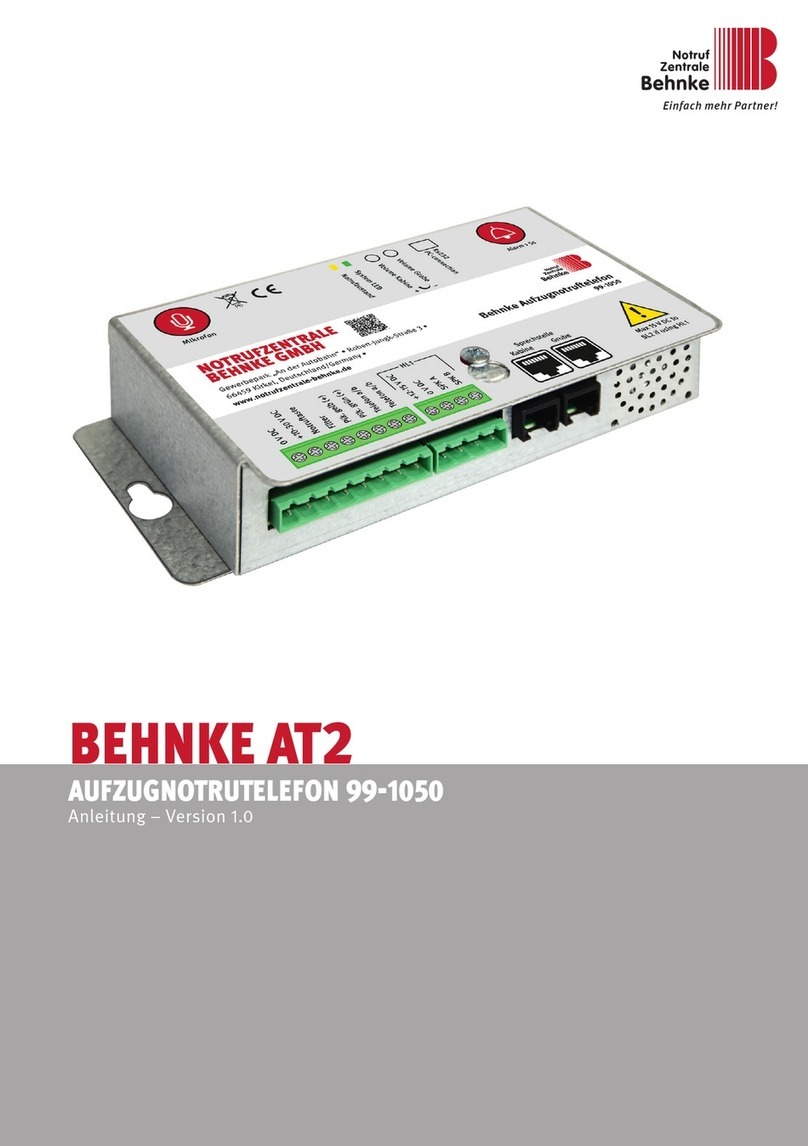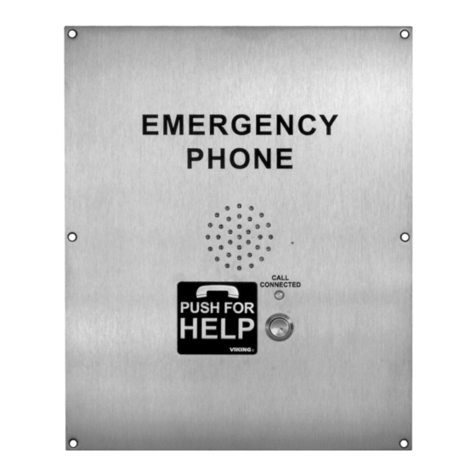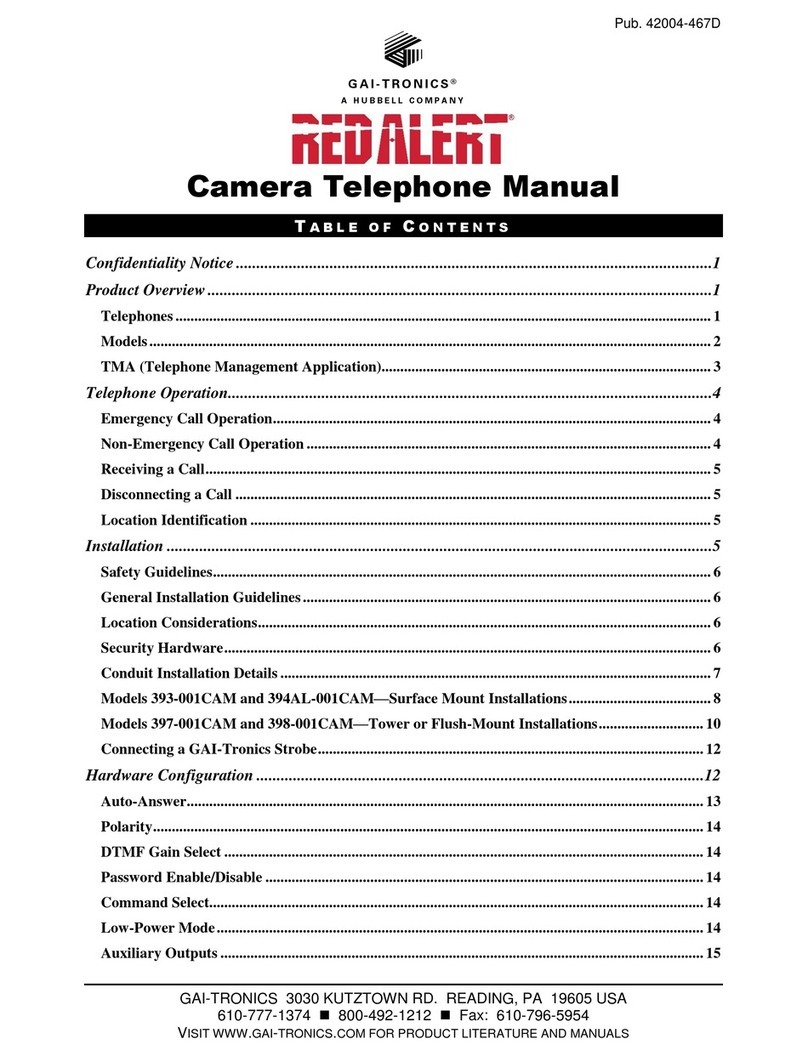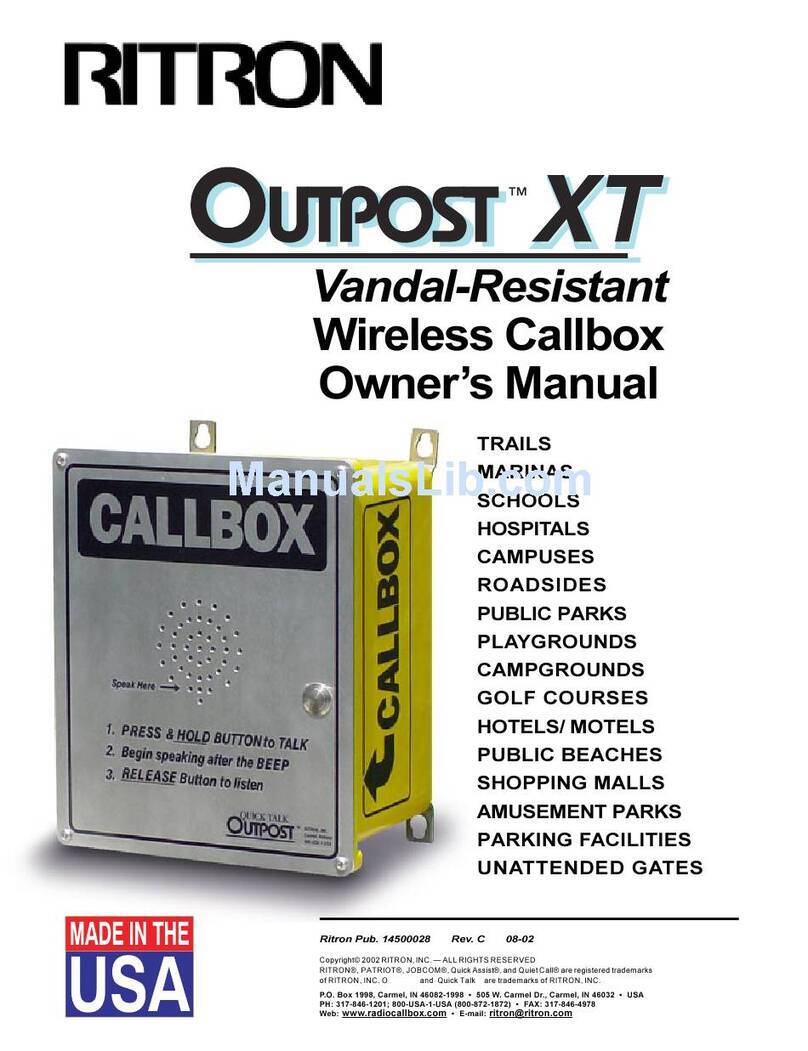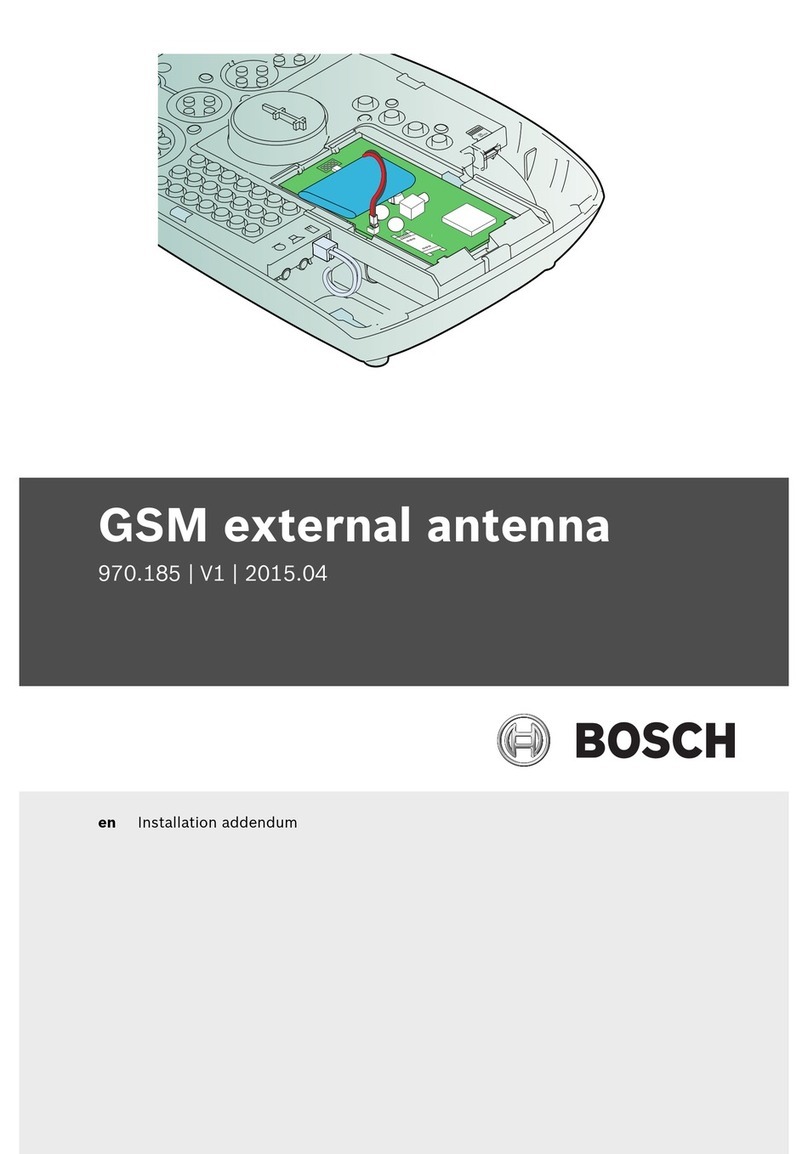tell GSM easyAID User manual

GSM easyAID Emergency call system
QUICK REFERENCE GUIDE
Document version: 1.3 26.01.2018

2
1. Emergency alarms can be initiated by pressing the Emergency button or
by pressing the button on the pendant RF transmitter:
2. The emergency alarm initiates SMS sending and/or voice call to the
configured phone numbers. In case of voice call the ring tone can be
heard. Conversation is possible in hands-free mode as soon as the called
party accepts the call. If possible, stay within 2 meters from the device,
thus the called party can hear your voice clearly.
Attention! If the configured calls are not started even within a few
minutes after sending an emergency alarm, it might happen that the calls
failed to start due to a connection (e.g. network outage due to
maintenance) or other error! In this case please resend the emergency
alarm and/or try to ask for help in other way as well, e.g. by phone.
3. To cancel or revoke an emergency alarm press the Cancel key during the
countdown. You can also end a call in progress by pressing the Cancel
key:
4. You can also dial any of the configured phone numbers by keeping
pressed the corresponding 1-4 function keys for at least 3 seconds
(speed dialing). Key 1 stands for the first phone number, key 2 for the
second, key 3 for the third and key 4 for the forth phone number.
5. The recorded reminders can be replayed by pressing the corresponding
1-4 function keys shortly, provided that there has been assigned a
reminder to the given key previously.
6. The user must confirm the reminders by pressing the Cancel key:

3
ATTENTION!
Usage-related warnings
Please consider the following warnings while using the product:
The main unit and its accessories (GSM antenna, AC adapter) are not waterproof, nor
splash-proof, therefore they should not be exposed to water. These accessories are
not shock-resistant and must not be exposed to high heat. The product is designed
for indoor use. The RF transmitter does not have an IP certification, but it has a level
of protection equal to IP51 classification specified by MSZ EN 60529:2015 standard,
that is, protected against dust and vertically falling water drops. The RF transmitter is
not shock-resistant, nor high heat resistant.
Do not move the GSM antenna mounted by the installer in its optimal place and do
not cover it, because this may cause weak signal which may make impossible the
usage of the device.
Do not move the unit from the place where the installer had mounted it.
Attention! The RF transmitter is not expected to operate outside the range determined
by the installer. Do not keep pushing unreasonably the RF transmitter’s button,
because this reduces the lifetime of its battery.
Attention! The device is not portable, operates normally from AC adapter. Do not
unplug the AC adapter from the mains power, because continuous supply voltage is
necessary for safe operation. The device can operate from its built-in backup battery
for limited time only (0…2 hours), depending on the battery’s level of charge, age,
condition and extent of duty use. The specified maximum value refers to a new, fully
charged battery.
The built-in backup battery is specifically designed to provide short-term power in
case of mains power failures and does not make the device portable!
Do not disconnect the power adapter of the device! A voice message warns when the
battery is low. In this case ensure power supply as soon as possible!
The easyAID is a signaling device which the manufacturer does not recommend to be
used in special, high-risk life situations such as supervision of patients suffering of
severe, life-threatening disease, due to the use of the GSM network, which might not
be always available (e.g. in case of network maintenance). The device does not
substitute the continuous personal supervision!
Due to the hands-free operation mode, it may happen that the caller hears his own
voice back through the phone during a conversation. This echo phenomenon is
normal when calling through the GSM network, therefore if it occurs, it may not be the
subject of a quality complaint with regard to the device.

4
Installation- and maintenance-related warnings
The device supports usage of two RF transmitters. The function related to the RF
transmitters (remotely initiated emergency alarm, battery voltage monitoring,
transmitter supervision) will work only if you assign the transmitter to the device.
Test the RF transmitter operating range before mounting the unit. Mount the unit in
the most suitable place considering the test results.
The operating range of the RF transmitter depends on the local reception conditions,
therefore it is the installer’s responsibility to test the proper operation on the scene,
assess and inform the user with regard to the local operating range, as well as to
mount the unit in the most optimal place, where it will be able to receive the RF
transmitter’s signals from the desired distances, taking into account that the
operating range of the RF transmitter decreases when its battery weakens.
Attention! The batteries of the RF transmitter have to be replaced forthwith if
“RF transmitter battery low” event is received, as well as at least yearly,
independently of the reception of this event, in order to retain the operating range of
the transmitter! The range decreases if the battery weakens!
It is very important to replace the batteries of the RF transmitter exclusively with new,
quality lithium batteries of the same manufacturer and type! Otherwise, the batteries
will not be balanced while in use, which results faster discharging, thus the batteries’
life will be shorter.
Attention! It is recommended to replace the device’s internal backup battery yearly!
The parameters of the battery are available in the technical specification section at
the end of the installation and application manual.
If the battery is not used permanently, i.e. the device is powered off, the battery may
go flat due to self-discharge and after a period of time it may get destroyed! To avoid
this, when the device is not in use for a longer period, it is recommended to power up
the device once a month and charge the battery.
Test the GSM signal strength with your mobile phone. It may happen that the signal
strength is not sufficient in the desired mounting place. In this case the planned
installation place can be changed before mounting the device.
Do not mount the unit in places where it can be affected by strong electromagnetic
disturbances (e.g. in the vicinity of electric motors, etc.).
Do not mount the unit in wet places, places with high degree of humidity or fire and
explosion hazardous places.
Do not mount the unit close to radiators, heating appliances, air conditioners or
where the environmental temperature may exceed 30ºC or drop below +10ºC.
For appropriate RF range, the device should be mounted horizontally in upright
position, on the wall or other suitable surface, at least at 1 meter from the ground
level.
Avoid mounting the device in the close proximity of metal surfaces, because these
greatly reduce the RF transmitter’s operating range!
Table of contents
Popular Emergency Phone manuals by other brands

SmarLink
SmarLink MEDI-MINDER installation manual
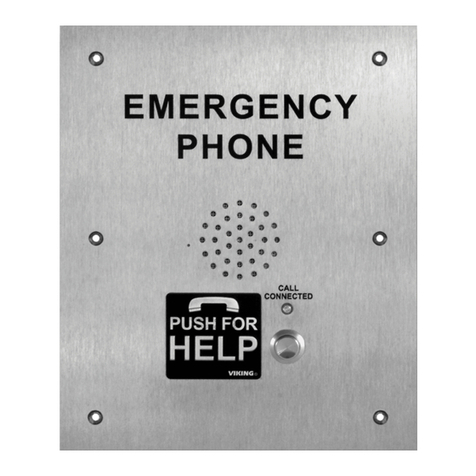
Viking
Viking E-1600A-TP-EWP Technical practice
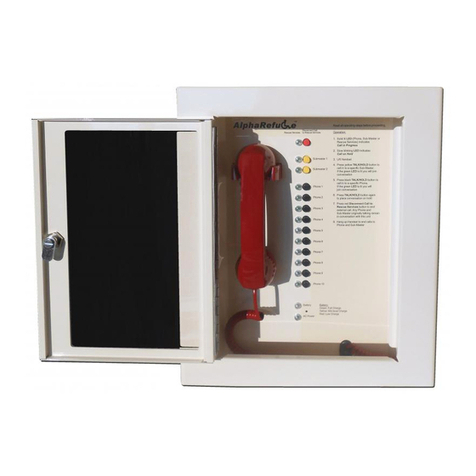
Alpha Communications
Alpha Communications AlphaRefuge 2100 Series Installation, Use and Wiring Instructions
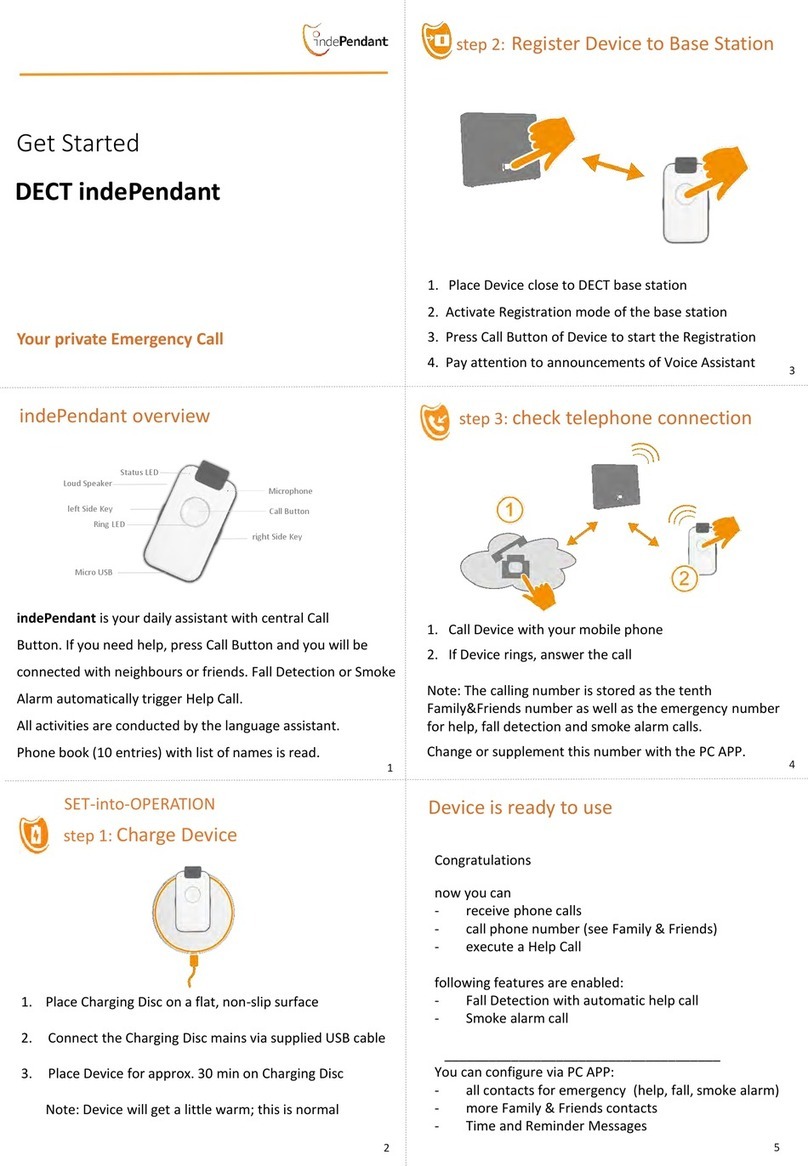
Dosch&Amand
Dosch&Amand DA1432 DECT indePendant Get started
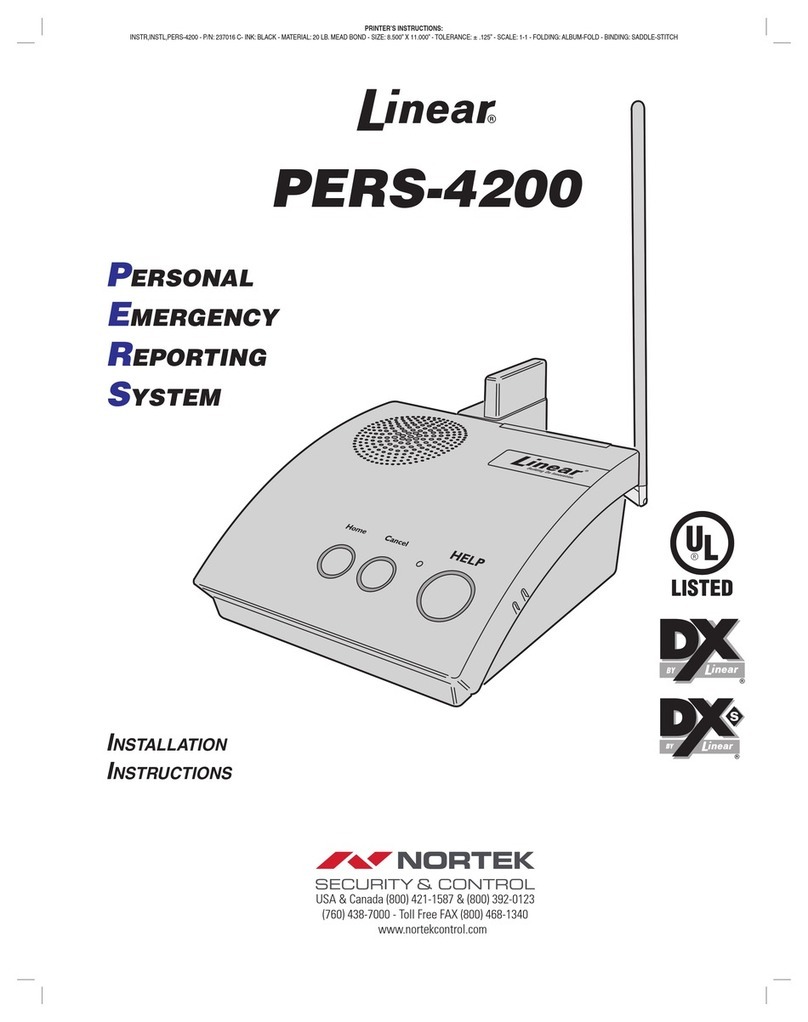
Nortek
Nortek Linear PERS-4200 installation instructions
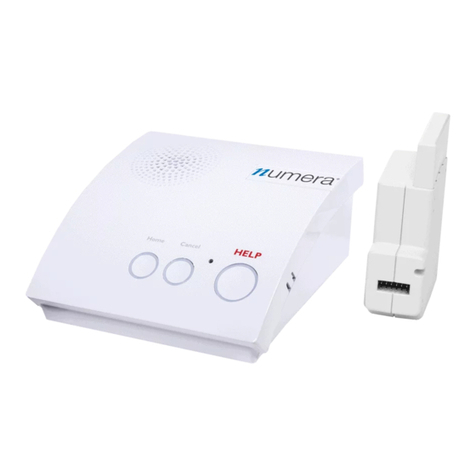
Numera
Numera PERS-4200X installation instructions


